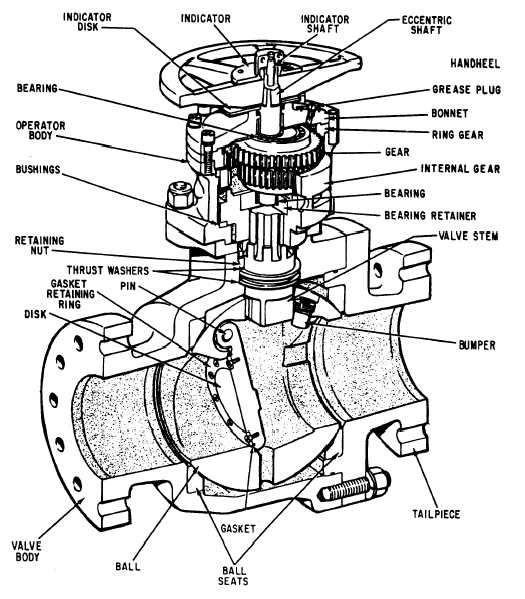same function as the disk in other valves. As the
valve handle is turned to open the valve, the ball
rotates to a point where part or all of the hole
through the ball is in line with the valve body inlet
and outlet, allowing fluid to flow through the
valve. When the ball is rotated so the hole is
perpendicular to the flow openings of the valve
body, the flow of fluid stops.
Most ball valves are the quick-acting type.
They require only a 90-degree turn to either
completely open or close the valve. However,
many are operated by planetary gears. This type
of gearing allows the use of a relatively small
handwheel and operating force to operate a fairly
large valve. The gearing does, however, increase
the operating time for the valve. Some ball valves
also contain a swing check located within the ball
to give the valve a check valve feature. Figure 6-2
shows a ball-stop, swing-check valve with a
planetary gear operation.
In addition to the ball valves shown in figures
6-1 and 6-2, there are three-way ball valves that
are used to supply fluid from a single source to
one component or the other in a two-component
system (fig. 6-3).
Figure 6-2.—Typical ball-stop, swing-check valve.
6-2

